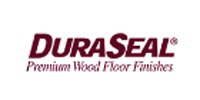Floor Installers
With over 25 years in business we know Hardwood floors
We work with the highest quality products.
Our in-house floor installers have the knowledge and ability to do any flooring job, both residential and commercial.
Call Now For A FREE Estimate: 757-693-4543
Call Now For A Free Estimate:
757-693-4543
Contact Ozark Flooring
Schedule your FREE consultation
Covering the Hampton Roads area:
Chesapeake, Hampton, Newport News, Norfolk, Poquoson, Portsmouth, Smithfield, Suffolk and Virginia Beach, Virginia
Our huge range of Hardwoods will complement any room, let our expert Floor Installers advise and help you at every step of the process
Ask about our range of eco friendly Hardwoods
OAK
Oak flooring is well known for it’s durability. For instance, Oak will last a long time and there are many varieties to suit your needs. In addition, Oak flooring can also add to the value of your home.
HICKORY
Hickory, like oak, is quite durable. Due to its’s strength and durability, scratches and dents are easily resisted. It is also less prone to warping due to humidity.
MAPLE
Maple is a very durable and solid choice. It can withstand potential dents with ease. Maple is very easily obtained and can be an affordable option.
PINE
Like Bamboo, Pine makes for an eco friendly and affordable option in any home. Pine is also quite durable and can easily last you for the life of your home.
Why should You choose Ozark Flooring?
Competitive prices offered every time
In business for over 25 years, we KNOW flooring
Experienced installers are employed by us, so we never subcontract
Only the highest quality flooring
Let your local wood floor specialists install the floor of your dreams
Invite our Mobile Showroom to come to you. Contact us today for a FREE home consultation



















